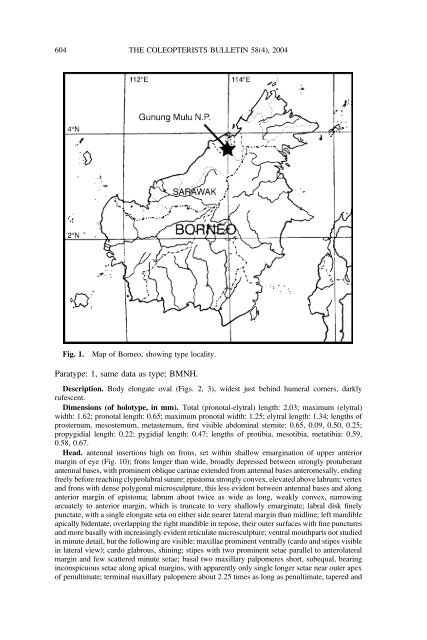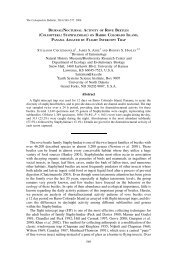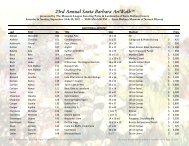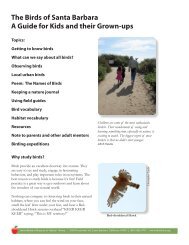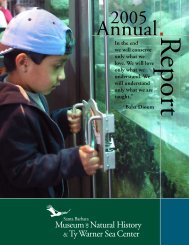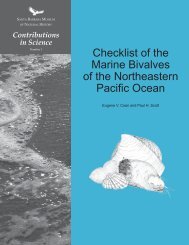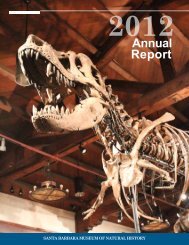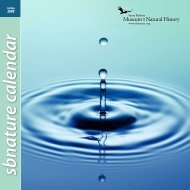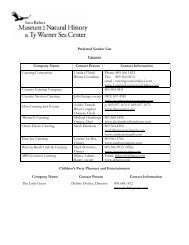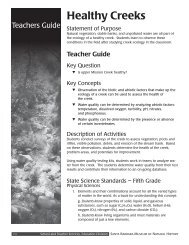Santa Barbara Museum of Natural History 2559 Puesta del ... - BioOne
Santa Barbara Museum of Natural History 2559 Puesta del ... - BioOne
Santa Barbara Museum of Natural History 2559 Puesta del ... - BioOne
Create successful ePaper yourself
Turn your PDF publications into a flip-book with our unique Google optimized e-Paper software.
604 THE COLEOPTERISTS BULLETIN 58(4), 2004Fig. 1.Map <strong>of</strong> Borneo, showing type locality.Paratype: 1, same data as type; BMNH.Description. Body elongate oval (Figs. 2, 3), widest just behind humeral corners, darklyrufescent.Dimensions (<strong>of</strong> holotype, in mm). Total (pronotal-elytral) length: 2.03; maximum (elytral)width: 1.62; pronotal length: 0.65; maximum pronotal width: 1.25; elytral length: 1.34; lengths <strong>of</strong>prosternum, mesosternum, metasternum, first visible abdominal sternite: 0.65, 0.09, 0.50, 0.25;propygidial length: 0.22; pygidial length: 0.47; lengths <strong>of</strong> protibia, mesotibia, metatibia: 0.59,0.58, 0.67.Head. antennal insertions high on frons, set within shallow emargination <strong>of</strong> upper anteriormargin <strong>of</strong> eye (Fig. 10); frons longer than wide, broadly depressed between strongly protuberantantennal bases, with prominent oblique carinae extended from antennal bases anteromesally, endingfreely before reaching clypeolabral suture; epistoma strongly convex, elevated above labrum; vertexand frons with dense polygonal microsculpture, this less evident between antennal bases and alonganterior margin <strong>of</strong> epistoma; labrum about twice as wide as long, weakly convex, narrowingarcuately to anterior margin, which is truncate to very shallowly emarginate; labral disk finelypunctate, with a single elongate seta on either side nearer lateral margin than midline; left mandibleapically bidentate, overlapping the right mandible in repose, their outer surfaces with fine puncturesand more basally with increasingly evident reticulate microsculpture; ventral mouthparts not studiedin minute detail, but the following are visible: maxillae prominent ventrally (cardo and stipes visiblein lateral view); cardo glabrous, shining; stipes with two prominent setae parallel to anterolateralmargin and few scattered minute setae; basal two maxillary palpomeres short, subequal, bearinginconspicuous setae along apical margins, with apparently only single longer setae near outer apex<strong>of</strong> penultimate; terminal maxillary palopmere about 2.25 times as long as penultimate, tapered and


